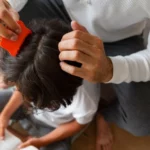Introduction: The idea that someone might be accessing your iPhone remotely can be unsettling. With the increasing amount of personal information stored on our phones, the security of our devices is more important than ever. In this article, we will explore various signs that could indicate remote access, the potential risks involved, and steps you can take to secure your device and protect your personal information.
Unusual Battery Drain:

One of the most common signs of unauthorized remote access is faster-than-normal battery drain. When a third party accesses your device remotely, it utilizes the phone’s resources, which can lead to a noticeable decrease in battery life. If you observe that your battery is depleting quicker than usual, even when the phone is not in use, it might be a sign of remote access.
High Data Usage:
Remote access can also lead to an increase in data usage. When someone accesses your iPhone remotely, they are utilizing your internet connection, which can result in a spike in data consumption. Monitoring your data usage can help you identify any unusual activity.
Strange Behaviour:
iPhones are known for their stability and consistent performance. If your phone starts behaving erratically, such as apps crashing, the phone restarting unexpectedly, or slow performance, it could be a sign that your device is compromised.
Unknown Apps:
Check your phone regularly for apps that you do not remember installing. Malicious software can sometimes be disguised as a legitimate app, and you might not even realize that your phone is at risk.
Overheating:

Just like unusual battery drain, overheating can also be a sign of unauthorized remote access. When someone accesses your phone remotely, it puts an additional load on the device, which can cause it to overheat.
Unexplained Charges:

Keep an eye on your phone bill for any unexplained charges or data usage. If your phone is being accessed remotely, the perpetrator might be using it to make calls, send texts, or use data, which could result in additional charges.
Strange Text Messages:
Receiving strange or garbled text messages can be a sign of a potential remote access attempt. These messages might be the result of a failed attempt to install malicious software on your device.
Background Noise During Calls:
If you hear unusual background noises during phone calls, such as clicking sounds, echoes, or static, it could be a sign that your calls are being monitored.
9. Delay in Shut Down:
When you turn off your iPhone, it should shut down quickly. If you notice a delay in shut down, or if the device seems to stay on for a few moments after the screen goes black, it could be a sign that something is amiss.
10. Unusual Pop-ups:
Be wary of any unexpected pop-ups or notifications, especially those that ask for your Apple ID password or other sensitive information. These could be phishing attempts to gain access to your personal data.
Checking for Spyware:
If you suspect that your iPhone is being accessed remotely, one of the first steps you should take is to check for spyware. There are various security apps available that can help detect and remove malicious software.
12. Keeping Your iOS Updated:
Ensure that your iPhone is always running the latest version of iOS. Apple regularly releases security updates to address vulnerabilities that could be exploited for remote access.
FAQs (Identifying Remote Access to Your iPhone)
Monitor for unusual battery drain, increased data usage, erratic behavior, unexpected apps, device overheating, unexplained charges, strange text messages, background noises during calls, delayed shutdown, and unusual pop-ups.
Update your iOS to the latest version, change your Apple ID password, enable two-factor authentication, check for and remove any unknown apps, and consider using security software to scan for malware.
Yes, keeping your iPhone’s iOS up to date ensures that you have the latest security patches, which can help protect your device from vulnerabilities that could be exploited for remote access.
Signs can include unusual battery drain, increased data usage, slow performance, unknown apps, device overheating, unexplained charges, strange text messages, and unexpected pop-ups.
Use a strong, unique password, enable two-factor authentication, and be cautious about sharing your Apple ID credentials.
Public Wi-Fi networks can be insecure, and connecting to them could expose your device to potential threats. It’s safer to use a secured network or a VPN.
Regular backups, at least once a week or according to your data usage and changes, are recommended to ensure that you can restore your device to a secure state if necessary.
Yes, a factory reset will erase all data and settings from your device, including any malicious software, effectively removing remote access. Ensure you have a backup before proceeding.
You can contact Apple Support through their official website, via phone, or by visiting an Apple Store
While iOS is quite secure and has built-in protections, users can explore reputable security apps on the App Store, such as Lookout or Norton Mobile Security, for additional protection.



GIPHY App Key not set. Please check settings